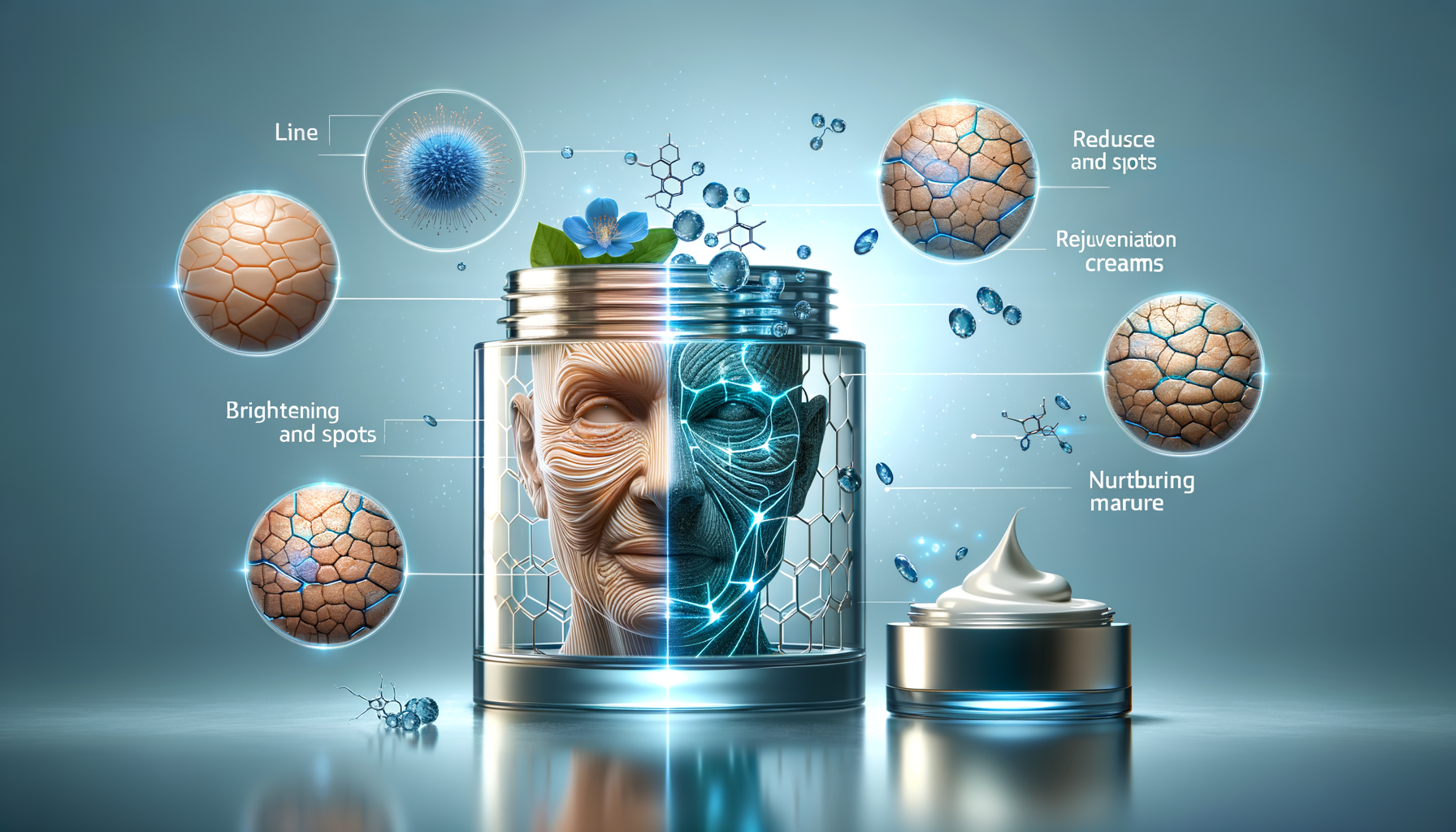Introduction to Anti-Aging Creams
As we age, our skin undergoes various changes, leading to the appearance of wrinkles, fine lines, and dark spots. Anti-aging creams have become a popular solution for those seeking to maintain a youthful appearance. These creams are formulated to target specific skin concerns, offering a blend of ingredients that work to reduce visible signs of aging. Understanding how these creams function and what they contain can help users make informed decisions about their skincare routine.
How Anti-Aging Creams Reduce Wrinkles and Dark Spots
Anti-aging creams are designed to address the common signs of aging, such as wrinkles and dark spots. They achieve this through a combination of active ingredients that work on different levels of the skin. Retinoids, for example, are known for their ability to accelerate cell turnover, which helps in reducing the appearance of fine lines and wrinkles. Similarly, peptides are included to stimulate collagen production, providing a firmer and more elastic skin texture.
Dark spots, often caused by sun exposure and aging, can be diminished with the help of ingredients like vitamin C and niacinamide. These components work to inhibit melanin production, leading to a more even skin tone. The effectiveness of these creams depends on consistent use and the concentration of active ingredients, making it essential to select products tailored to individual skin needs.
Brightening and Rejuvenating Ingredients in Creams
The quest for brighter and more youthful skin has led to the inclusion of various ingredients in anti-aging creams. Vitamin C is a powerhouse ingredient recognized for its brightening properties. It not only reduces pigmentation but also protects the skin from oxidative stress caused by free radicals. Another notable ingredient is hyaluronic acid, which provides intense hydration, plumping the skin and reducing the appearance of fine lines.
Antioxidants, such as green tea extract and resveratrol, are also commonly found in these creams. They help in neutralizing free radicals, which can accelerate the aging process. By incorporating these ingredients, anti-aging creams offer a comprehensive approach to skincare, addressing both the surface and deeper layers of the skin.
Skincare for Mature and Uneven Skin
Mature skin requires a tailored approach to address its unique needs. As the skin ages, it tends to become thinner and more prone to dryness, necessitating the use of rich, nourishing creams. Ingredients such as ceramides and fatty acids are beneficial in restoring the skin’s natural barrier, preventing moisture loss and improving texture.
Exfoliation is another crucial aspect of caring for mature skin. Gentle exfoliants like lactic acid can help remove dead skin cells, promoting a smoother and more even complexion. It is important to balance exfoliation with hydration, ensuring that the skin remains supple and resilient.
Regular use of sunscreen is essential for protecting mature skin from further damage. UV rays can exacerbate signs of aging, making it vital to incorporate broad-spectrum SPF into daily skincare routines. By combining these strategies, individuals with mature and uneven skin can achieve a healthier and more radiant appearance.
Conclusion: Embracing Effective Skincare
Anti-aging creams offer a multitude of benefits for those looking to reduce wrinkles, dark spots, and other signs of aging. By understanding the ingredients and their functions, users can select products that align with their skincare goals. Emphasizing hydration, protection, and gentle exfoliation can significantly enhance the appearance of mature skin, promoting a youthful and vibrant complexion. Embracing these skincare practices allows individuals to age gracefully, with confidence and poise.




Leave a Reply